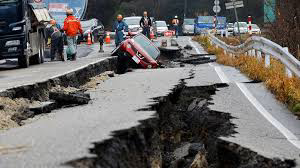In 2024, several disasters occurred around the world, highlighting the ongoing vulnerability of communities to various natural and human-made hazards. Here are some points highlighting notable disasters:
1. **Natural Disasters**:
- **Extreme Weather Events**:
Regions experienced devastating hurricanes, typhoons, and cyclones, resulting in widespread damage to infrastructure, loss of life, and displacement of populations.
- **Wildfires**:
Intense wildfires ravaged parts of Australia, the United States, and other countries, fueled by drought conditions, high temperatures, and strong winds, leading to destruction of forests, homes, and wildlife habitats.
- **Floods**:
Heavy rainfall and overflowing rivers caused significant flooding in many areas, particularly in low-lying coastal regions and flood-prone areas, resulting in property damage, crop loss, and humanitarian emergencies.
- **Earthquakes and Tsunamis**:
Seismic activity in seismically active zones triggered earthquakes and tsunamis, leading to destruction of buildings, infrastructure, and loss of lives in affected communities.
2. **Man-Made Disasters**
- **Industrial Accidents**:
Several industrial accidents occurred, including chemical spills, explosions, and fires in factories and manufacturing facilities, resulting in environmental contamination, injuries, and fatalities.
- **Infrastructure Failures**:
Collapses of bridges, dams, and other critical infrastructure occurred in some regions, posing risks to public safety, disrupting transportation networks, and necessitating emergency response efforts.
- **Humanitarian Crises**:
Conflict-related humanitarian crises persisted in various regions, exacerbating displacement, food insecurity, and health challenges for affected populations, particularly in conflict zones and areas with ongoing political instability.
3. **Health Emergencies**:
- **Continuation of the COVID-19 Pandemic**: Despite vaccination efforts and public health measures, the COVID-19 pandemic continued to pose significant challenges globally, with periodic outbreaks, strains on healthcare systems, and socio-economic impacts affecting communities worldwide.
4. **Environmental Degradation**:
- **Loss of Biodiversity**: Habitat destruction, deforestation, pollution, and other factors contributed to the ongoing loss of biodiversity and ecosystems, posing long-term environmental challenges and threats to global sustainability.











Comments
Post a Comment